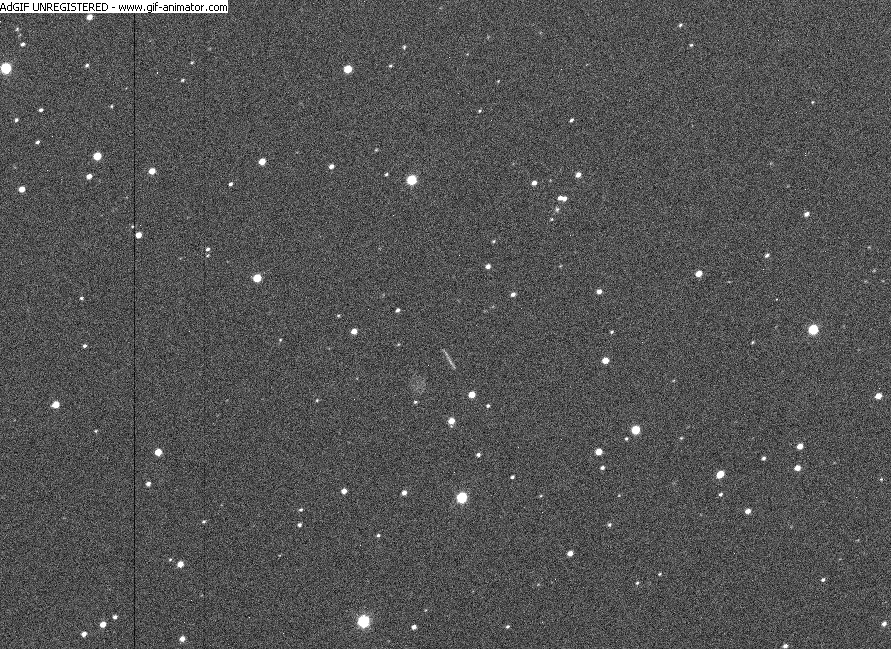Emily Lakdawalla • Sep 08, 2010
Early warning for close approaches of two house-sized asteroids
Most of you have probably heard by now of two small asteroids, both in the neighborhood of 10 meters in diameter, recently discovered on trajectories that pass unusually close to Earth. They were discovered on September 5 by the Catalina Sky Survey, and have since been observed by numerous amateur and professional astronomers. Neither poses any risk to Earth; even if they were on collision courses, which they are not, they would be too small to do much more than spatter a few rocks onto the ground. It'd be a bad day for you if you were underneath that, but these rocks wouldn't do any collateral damage outside their physical impact zone.
Here's the details on the space rocks:
- 2010 RX30 was the first to pass. It already zipped by us, passing within 248,000 kilometers, or about 0.6 lunar distance, at 09:51 UTC today. It was estimated to be 10 to 20 meters in size.
- 2010 RF12 will pass very soon, at 19:12 UTC, at a distance of about 79,000 kilometers or 0.2 lunar distances, which is still well above the geosynchronous altitude.
Both are Aten asteroids, which are bodies with Earth-crossing orbits with orbital period of less than one year. This distinguishes them from Apollos -- Earth-crossers with orbital periods greater than one year; and Amors, which are Mars-crossers that do not reach Earth's distance from the Sun (but which have orbit perihelia near enough to Earth's orbit, within 0.3 A.U., to qualify them as near-Earth asteroids). To visualize their orbits, use JPL's handy-dandy small-body database browser: 2010 RX30 and 2010 RF12. Looking at those diagrams, it's very disconcerting to see Earth and the asteroid label name overlapping, but space is big, and they're going to zip by harmlessly.
Interestingly, a quick look at JPL's "Impact Risk" website indicates that, with our current knowledge of their orbits, both of these bodies do have nonzero future impact probabilities. Right now RX30 is showing up as a roughly 1-in-a-million impact chance between 2063 and 2066, while RF12 actually has a pretty high impact probability of about 1 in a hundred between 2095 and 2110. However, again, because of their small size, these things pose no real hazard even if they do land on us.
I was thinking today about how these early warnings of close approaches are going to be coming more and more frequently as surveys improve. Every time one of these close-approaching bodies is discovered and flagged as a potential hazard, dozens (hundreds?) of willing amateur astronomers go to their scopes and photograph the asteroids against the background of stars to help refine their paths. Every time, greater precision has retired the risk from the asteroid to be pretty much negligible. That makes me wonder how things will unfold the first time we do discover an impactor -- or, I should say, the second, because 2008 TC3 was the first such body observed from space down to the ground. But TC3 was roughly an order of magnitude smaller than RX30 and RF12; the newly discovered things would make much, much bigger sky shows. When will some astronomer, professional or amateur, make that first chilling discovery that something big enough actually to do some damage is going to impact for sure? Tomorrow? Not for a hundred years? How will that unfold?
Here's just one recent amateur view of 2010 RF12, by Ernesto Guido and Giovanni Sostero of Remanzacco Observatory. These things move so very fast that they show up as elongated blips for most observers.

Support our core enterprises
Your support powers our mission to explore worlds, find life, and defend Earth. You make all the difference when you make a gift. Give today!
Donate

 Explore Worlds
Explore Worlds Find Life
Find Life Defend Earth
Defend Earth

